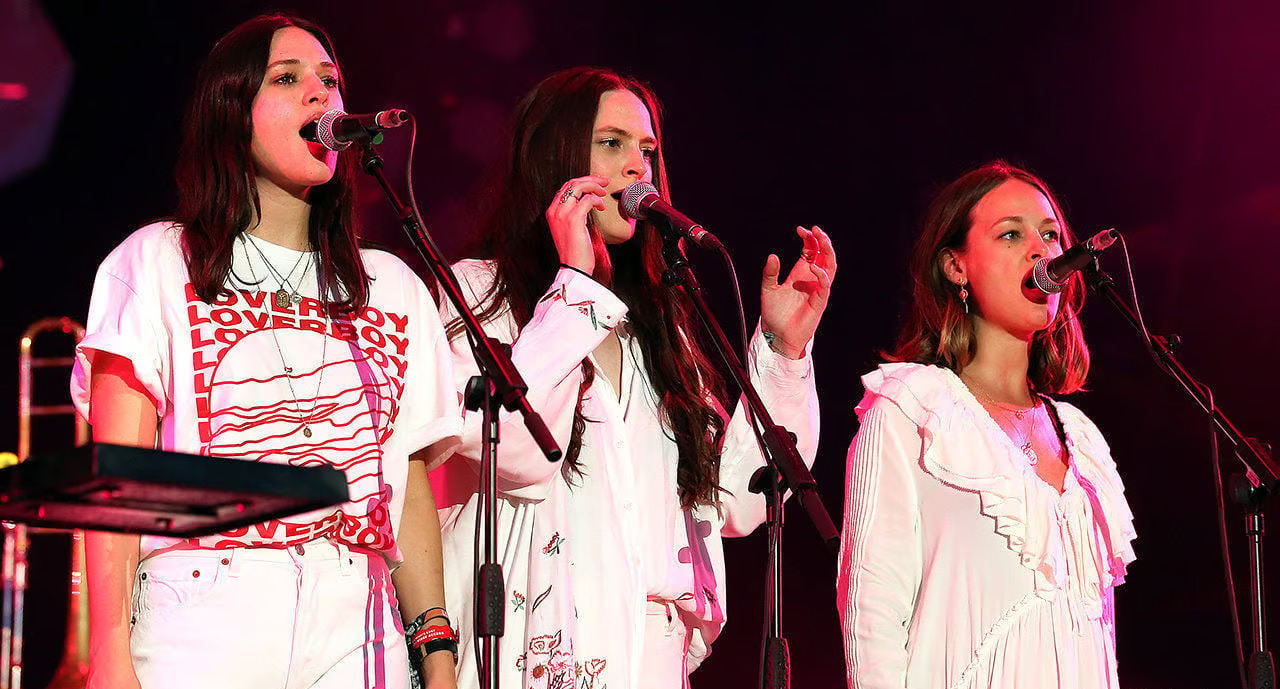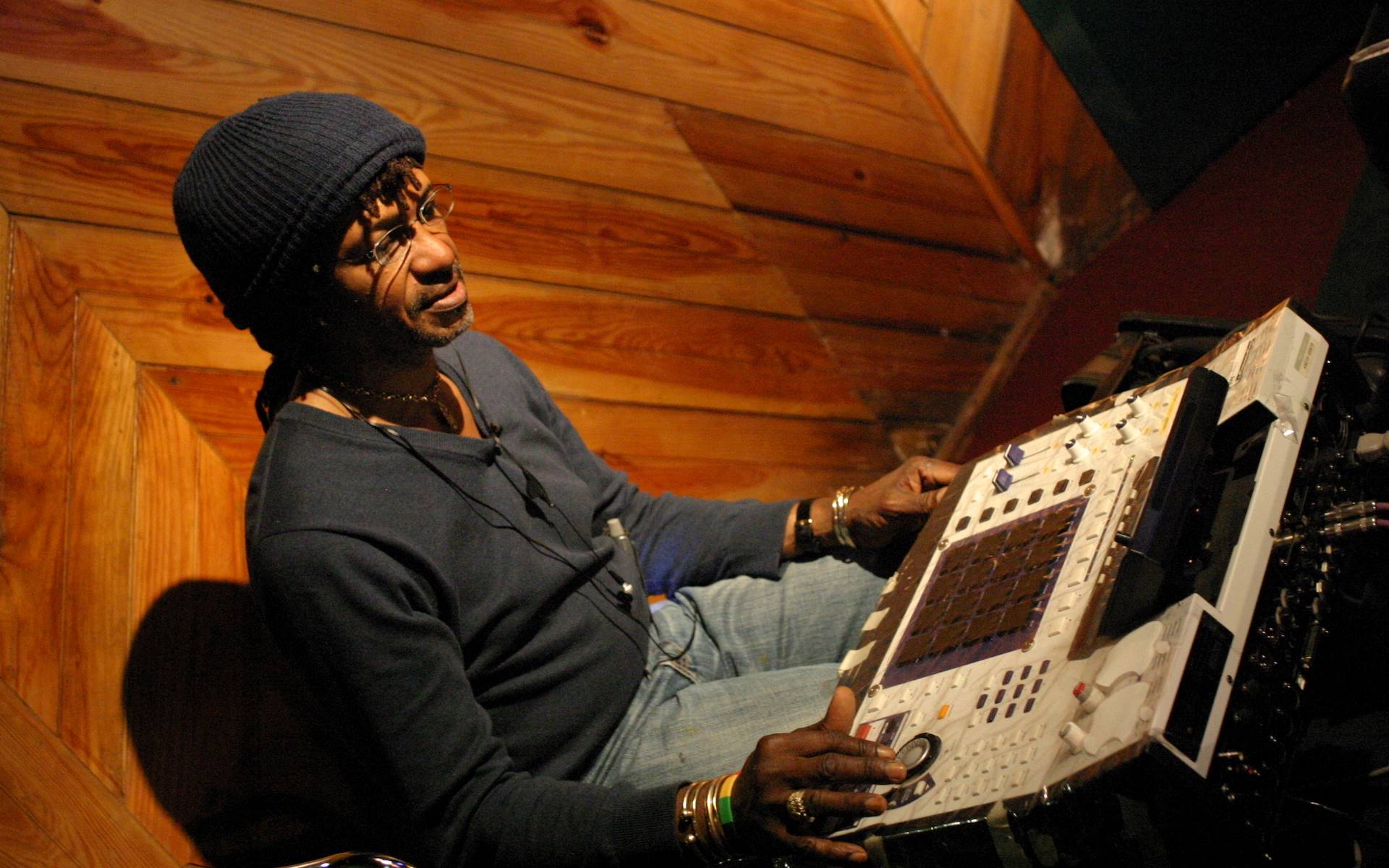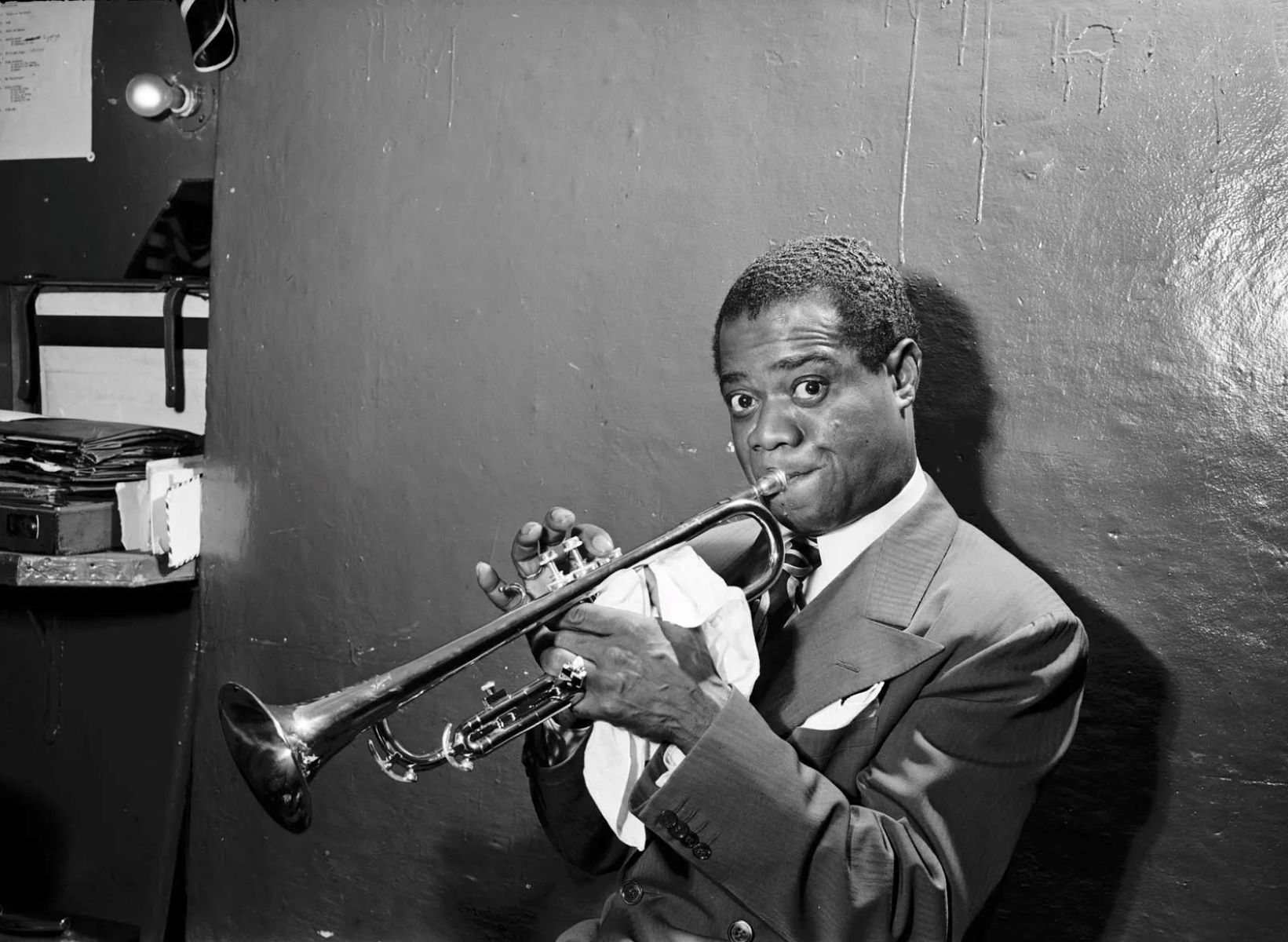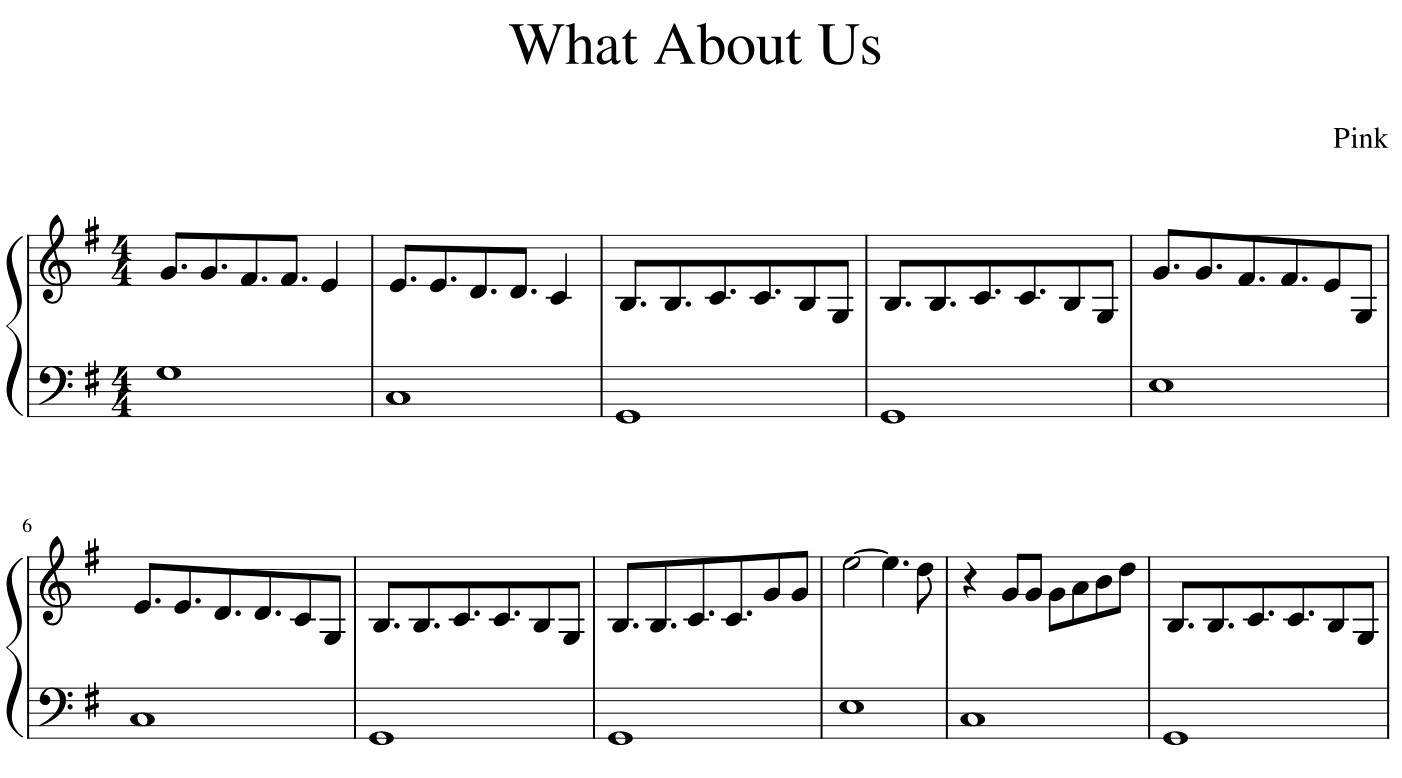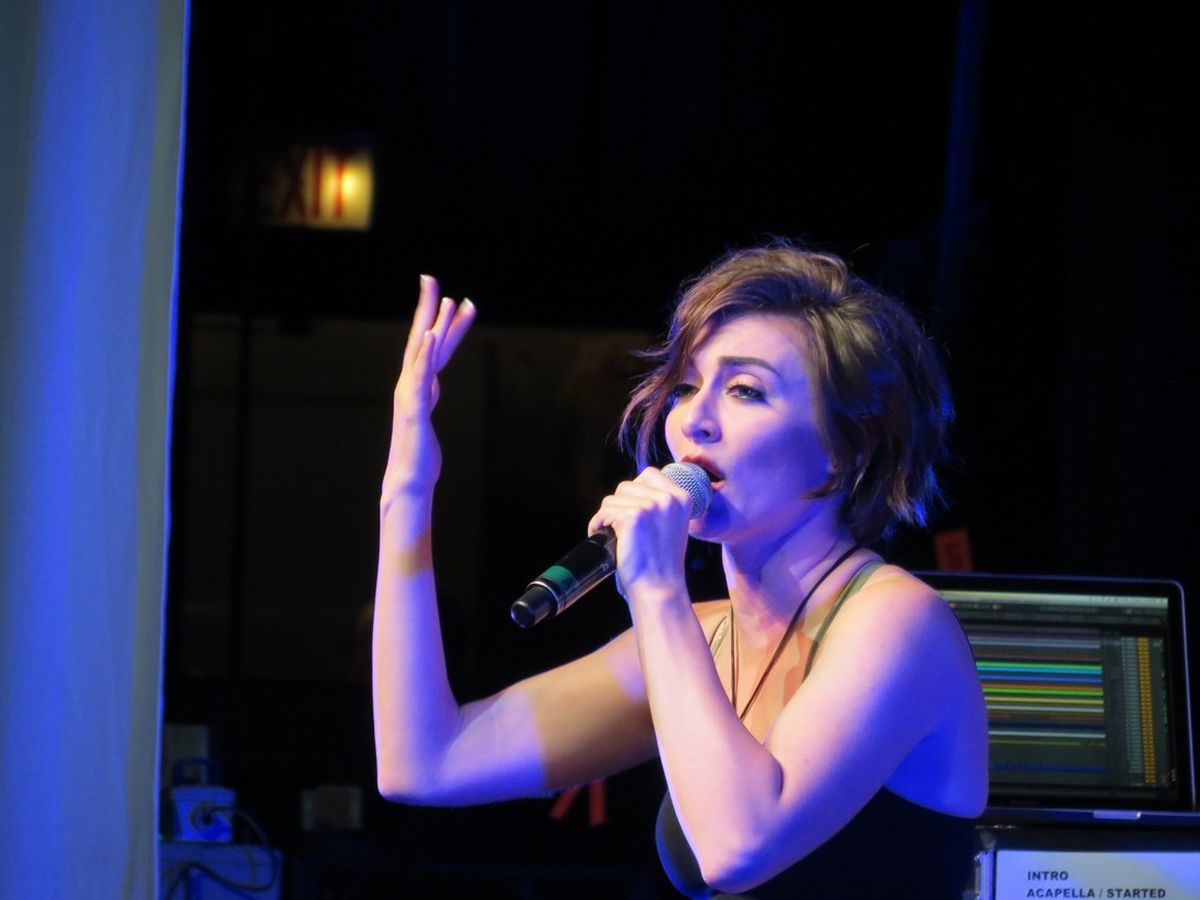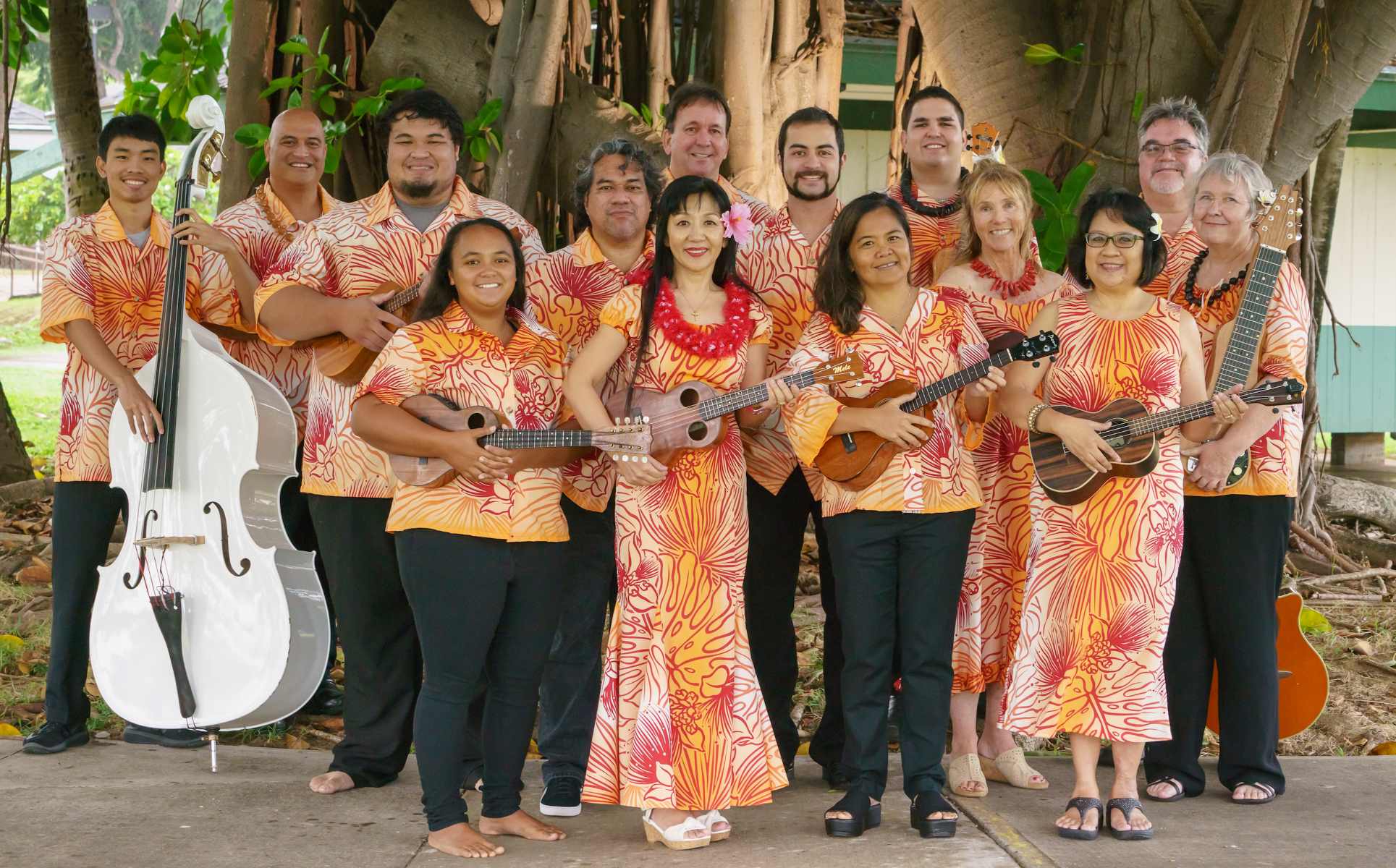Home>Genres>Jazz>What Is Likely True About The Genres Of Jazz Music
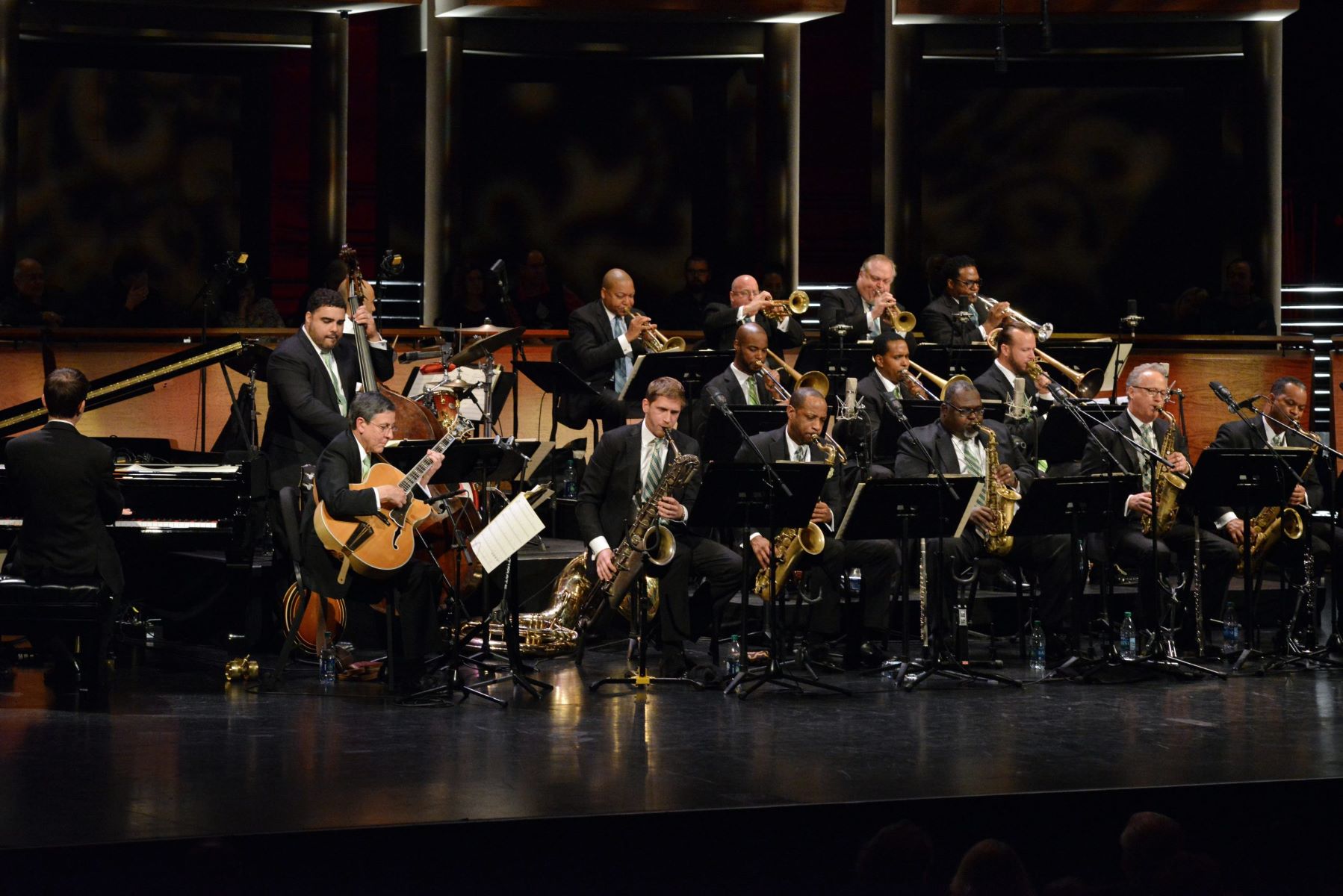

Jazz
What Is Likely True About The Genres Of Jazz Music
Modified: January 22, 2024
Discover the essence of Jazz music and its diverse genres. Explore the rich history and evolution of this iconic musical style.
(Many of the links in this article redirect to a specific reviewed product. Your purchase of these products through affiliate links helps to generate commission for AudioLover.com, at no extra cost. Learn more)
Table of Contents
Introduction
Jazz music is one of the most exhilarating and captivating genres that has stood the test of time. It is a unique form of expression that originated in the late 19th and early 20th centuries in African-American communities in the United States. Jazz music combines elements of African and European musical traditions, creating a rich and diverse sonic landscape.
What sets jazz apart from other genres is its improvisational nature. Jazz musicians have the freedom to explore and experiment with melodies, rhythms, and harmonies, creating spontaneous and dynamic performances. This improvisational aspect gives jazz its energetic and unpredictable character, making every performance a one-of-a-kind experience.
Throughout its history, jazz has evolved and branched out into various sub-genres. From traditional jazz to fusion jazz, each sub-genre has its own unique style and characteristics. This article will delve into the different sub-genres of jazz, exploring their defining features and contributions to the genre as a whole.
Whether you’re a long-time jazz enthusiast or new to the genre, this article will provide you with a comprehensive understanding of the diverse world of jazz music. So, sit back, relax, and let’s embark on a musical journey through the intricacies of jazz!
Definition and History of Jazz Music
Jazz music can be described as a genre that originated in African-American communities in the early 20th century. It emerged as a fusion of African and European musical traditions, combining elements of improvisation, syncopation, and swing. Jazz has its roots in the cultural experiences of enslaved Africans who brought their musical traditions to the United States, blending them with the Western musical styles they encountered. The genre gained popularity and recognition during the early 1900s, particularly in cities like New Orleans, where a vibrant music scene fostered its growth.
The term “jazz” itself has a debated origin, with no definitive etymology. Some believe it derives from the term “jass,” a slang word for sexual intercourse, indicating the rhythmic and exciting nature of the music. Others suggest it may have originated from the word “jaser,” meaning to chatter or talk loudly. Regardless of its etymology, jazz quickly became a significant cultural phenomenon and an integral part of American music history.
The early years of jazz were characterized by the dominance of traditional jazz, also known as Dixieland or New Orleans jazz. This style emphasized collective improvisation, with musicians playing simultaneous but independent lines. It featured lively polyphonic textures, syncopated rhythms, and spirited solos, often incorporating elements of ragtime and blues.
As the popularity of jazz grew, it started to spread across the United States, reaching major cities like Chicago, New York, and Kansas City. In these urban centers, new styles of jazz began to emerge, influenced by the evolving social and cultural landscape. The swing era of the 1930s and 1940s brought about a shift in jazz, with big bands taking center stage and a greater emphasis on arranged compositions and danceable rhythms.
Following the swing era, jazz continued to evolve and diversify. The bebop movement of the 1940s introduced complex harmonies, intricate melodies, and fast tempos, challenging traditional notions of jazz composition and improvisation. This movement was led by musicians such as Charlie Parker, Dizzy Gillespie, and Thelonious Monk, who pushed the boundaries of jazz with their virtuosic playing and innovative approaches.
In the 1950s and 1960s, cool jazz emerged as a more relaxed and introspective style, characterized by its emphasis on melodic improvisation and subdued tones. Artists like Miles Davis, Dave Brubeck, and Chet Baker popularized this style and brought a more reflective and introspective quality to jazz music.
The 1960s also saw the rise of avant-garde and free jazz, challenging traditional notions of structure and tonality. Artists like Ornette Coleman and John Coltrane pushed the boundaries of improvisation and experimentation, creating highly innovative and boundary-pushing music.
In the late 1960s and beyond, fusion jazz emerged, blending elements of jazz with rock, funk, and other genres. Artists like Miles Davis and Herbie Hancock incorporated electric instruments, synthesizers, and a more groove-centric approach, creating a fusion of styles that appealed to a wider audience.
Throughout its history, jazz music has continually evolved and absorbed influences from various genres and cultures. Today, it remains a vibrant and ever-changing art form, with countless sub-genres and styles that showcase the creative and expressive capacity of its musicians.
Characteristics of Jazz Music
Jazz music is characterized by several distinctive features that set it apart from other genres. These characteristics contribute to the unique and vibrant sound that defines jazz. Here are some key elements that define jazz music:
- Improvisation: One of the defining features of jazz is improvisation, where musicians create and develop musical ideas on the spot. Jazz musicians are skilled in spontaneously composing melodies, harmonies, and rhythms, often taking turns to showcase their individual improvisational skills during performances.
- Swing Rhythm: Jazz is known for its swing rhythm, which creates a relaxed yet lively groove. The swing rhythm is characterized by a syncopated feel, with the beats played slightly off the typical strong beats. This swing creates a sense of swing and bounce, encouraging listeners to tap their feet and move to the music.
- Syncopation: Jazz music often incorporates syncopation, where accents fall on off-beats rather than the expected strong beats. This rhythmic technique adds a sense of unpredictability and excitement to the music, giving it its distinctive feel.
- Complex Harmonies: Jazz compositions often feature complex and sophisticated harmonies. Jazz musicians explore different chord progressions, using extended chords, altered chords, and substitutions to create rich and colorful harmonies that enhance the overall sound of the music.
- Call and Response: Call and response is a musical technique commonly used in jazz. It involves a musical phrase or statement played by one musician, followed by a response from another musician or group of musicians. This interactive and conversational style adds an element of dialogue and dynamic interplay to jazz performances.
- Virtuosic Solos: Jazz musicians are known for their impressive solo improvisations. Each musician gets an opportunity to showcase their skills and musical ideas through extended solos. These solos often feature rapid and intricate melodies, showcasing the musicians’ technical prowess and creativity.
- Emotional Expression: Jazz music is deeply rooted in emotion and expression. Whether it’s the passion of a heartfelt ballad or the fiery energy of an up-tempo tune, jazz musicians aim to convey a wide range of emotions through their playing. This emotional depth is one of the reasons jazz resonates so strongly with listeners.
These characteristics, along with the genre’s rich history and diverse sub-genres, contribute to the enduring popularity and artistic significance of jazz music. By embracing spontaneity, intricate harmonies, and virtuosic improvisation, jazz continues to captivate audiences and push the boundaries of musical expression.
Traditional Jazz
Traditional jazz, also referred to as Dixieland or New Orleans jazz, is the earliest form of jazz that emerged in the early 20th century. It originated in the city of New Orleans, where African, Caribbean, and European musical traditions converged.
Characterized by its lively and exuberant sound, traditional jazz is rooted in collective improvisation. Bands consisting of various instruments, including trumpet, trombone, clarinet, piano, banjo, and drums, come together to create a dynamic and polyphonic texture.
One of the standout features of traditional jazz is the use of “frontline” instruments, particularly the trumpet, trombone, and clarinet, which take turns playing melodic lines and engaging in playful musical dialogues. The trumpet often plays the main melody while the trombone adds a rich counterpoint, and the clarinet weaves intricate improvised lines throughout the arrangement.
The rhythm section, typically comprised of piano, banjo, and drums, provides the steady beat and rhythmic foundation for the ensemble. The banjo plays a distinctive role, providing syncopated chords and strums that add a lively and pulsating feel to the music.
Traditional jazz draws heavily from the blues and ragtime genres. It incorporates blues-inspired melodies and harmonies, offering a soulful and expressive quality. The influence of ragtime can be heard in the syncopated rhythms and lively piano playing, adding a playful and infectious energy to the music.
This style of jazz became popular in New Orleans during the early 20th century and eventually spread to other cities across the United States. It played a significant role in shaping the foundation of jazz music as a whole.
Notable musicians and bands associated with traditional jazz include Louis Armstrong, Jelly Roll Morton, King Oliver, and the Original Dixieland Jazz Band. They paved the way for future jazz musicians and left an indelible mark on the genre.
Today, traditional jazz continues to be celebrated and performed by enthusiasts and dedicated musicians. Its energetic and distinctive sound serves as a testament to the roots of jazz and the enduring power of this iconic genre.
Swing Jazz
Swing jazz, popularly known as the swing era, emerged in the 1930s and 1940s as a response to the Great Depression and subsequent economic recovery. It marked a shift from the collective improvisation of traditional jazz to a more arranged and orchestrated style.
Swing jazz is characterized by its infectious rhythm, big band ensembles, and a focus on danceable melodies. It features a strong sense of swing, where the music propels forward with a syncopated and bouncing rhythm that encourages dancing and movement.
Big bands, consisting of a large horn section, rhythm section, and sometimes a vocalist, became the heart of swing jazz. These bands, often comprised of tenor and alto saxophones, trumpets, trombones, and a rhythm section, offered a full and powerful sound.
Arrangements played a crucial role in swing jazz. Composers and arrangers meticulously notated the melodies, harmonies, and solos, giving the music a polished and well-orchestrated feel. Famous bandleaders and arrangers in swing jazz include Duke Ellington, Count Basie, Benny Goodman, and Glenn Miller.
Swing jazz brought forth a new era of dance music. The lively and energetic nature of the music, combined with the popularization of social dances like the Lindy Hop and the Jitterbug, made swing jazz a sensation in dance halls across the United States.
Iconic swing jazz tunes, known as standards, were composed during this era. Songs like “In the Mood,” “Sing, Sing, Sing,” and “Take the ‘A’ Train” are still recognized and beloved today. These compositions often featured memorable melodies, catchy arrangements, and memorable solos.
Swing jazz also gave rise to famous vocalists such as Ella Fitzgerald, Billie Holiday, and Frank Sinatra. Their smooth and expressive voices added a touch of glamour and sophistication to the genre.
The swing era came to an end with World War II and changing musical tastes. However, its impact on jazz and popular music cannot be overstated. Swing jazz laid the foundation for subsequent styles, influencing the development of bebop, cool jazz, and other sub-genres.
To this day, swing jazz continues to captivate audiences with its infectious rhythm, vibrant ensembles, and timeless melodies. Its legacy remains alive through the recordings and performances of modern jazz bands and enthusiasts who keep the spirit of swing jazz alive.
Bebop Jazz
Bebop jazz, often referred to as simply “bebop,” emerged in the 1940s as a response to the constraints and commercialism of the swing era. It marked a departure from the dance-oriented music of the time, focusing instead on intricate melodies, complex harmonies, and fast tempos.
Bebop jazz was a musical revolution, challenging traditional notions of jazz composition and improvisation. It pushed the boundaries of what was previously thought possible in terms of technical skill and musical complexity.
The musicians who pioneered bebop, including Charlie Parker, Dizzy Gillespie, Thelonious Monk, and Bud Powell, sought to create a more intellectual and virtuosic style of jazz. They expanded the harmonic possibilities with complex chord substitutions and extended harmonies, introducing unpredictable melodic lines and intricate rhythmic patterns.
Bebop jazz featured small ensembles, typically consisting of a rhythm section (piano, bass, and drums) and a frontline of horn players (usually saxophone and trumpet). These musicians engaged in rapid and improvisational dialogues, showcasing their individual skills and pushing the boundaries of improvisation.
One of the defining features of bebop is its blistering tempo. Lively and fast-paced, bebop tunes challenged musicians with their rapid chord changes and intricate melodies. The musicians aimed to create a sense of excitement and urgency in their performances.
Improvisation played a central role in bebop. Musicians took turns unleashing dazzling and virtuosic solos, displaying their technical prowess and innovative ideas. Bebop solos often featured complex and lightning-fast lines, showcasing the musicians’ deep understanding and command of their instruments.
Bebop jazz was not widely embraced during its early years. Its complex and challenging nature made it less accessible to mainstream audiences, and it was primarily appreciated by fellow musicians and jazz enthusiasts. However, bebop went on to become one of the most influential and groundbreaking movements in the history of jazz.
The legacy of bebop can be seen in the subsequent development of jazz. It laid the foundation for other sub-genres, including hard bop, cool jazz, and modal jazz, influencing countless musicians in their pursuit of creative expression and pushing the boundaries of what jazz could be.
To this day, bebop remains an essential part of the jazz canon. It continues to inspire and challenge musicians with its intricate melodies, complex harmonies, and exhilarating improvisation, leaving an indelible mark on the evolution of jazz music.
Cool Jazz
Cool jazz, also known as West Coast jazz, emerged in the 1950s as a contrast to the fast-paced and intense bebop movement. It was characterized by a more relaxed and subdued style, emphasizing melodic improvisation, restrained dynamics, and a sophisticated approach to composition.
Cool jazz was a response to the high energy and complexity of bebop. Musicians sought to create a more laid-back and introspective sound, focusing on melodic beauty and subtle nuances in their playing.
One of the key features of cool jazz is its emphasis on a softer sound. Musicians approached their instruments more gently, producing a smoother and more mellow tone. The dynamic range was often restrained, with an emphasis on subtlety and lyricism.
Cool jazz also drew inspiration from classical music, incorporating elements of counterpoint and chamber music into its compositions. The use of intricate harmonies and polyphonic textures gave the music a more refined and intellectual quality.
Notable figures in the cool jazz movement include Miles Davis, Chet Baker, Gerry Mulligan, and Dave Brubeck. These musicians brought a sense of coolness and sophistication to their performances, embodying the essence of the genre.
The use of unusual time signatures was another hallmark of cool jazz. Musicians experimented with complex rhythms, incorporating meters such as 5/4 or 7/4, creating a sense of unpredictability and expanding the possibilities of jazz composition.
Cool jazz also embraced the use of non-traditional instruments, such as the flute and French horn, adding a unique timbre to the ensembles. This experimentation expanded the sonic palette of jazz and further distinguished cool jazz from its predecessors.
The recordings of the Miles Davis album “Birth of the Cool” and the Dave Brubeck Quartet’s “Time Out” are often cited as pivotal moments in the popularization of cool jazz. These albums helped bring the style to a wider audience, solidifying cool jazz as a significant sub-genre within jazz.
Cool jazz had a lasting impact on the development of subsequent jazz styles. It influenced the emergence of modal jazz and the fusion movement of the 1960s and 1970s, as well as the work of contemporary jazz artists who continue to explore the melodic and relaxed qualities of cool jazz.
Today, cool jazz remains an influential and beloved part of the jazz repertoire. Its understated elegance, captivating melodies, and sophisticated approach continue to resonate with listeners, making it a timeless and essential genre within the world of jazz.
Hard Bop
Hard bop emerged in the 1950s as a response to the cool jazz movement and a return to the roots of jazz. It emphasized a harder-edged and more aggressive sound, combining elements of bebop with blues, gospel, and R&B influences.
Hard bop retained the virtuosic and improvisational nature of bebop, while infusing it with a more soulful and earthy feel. The genre reflected the changing social and cultural landscape of the time, with musicians expressing their experiences and struggles through their music.
The rhythm section in hard bop, often consisting of drums, bass, and piano, played a crucial role in creating a driving and energetic groove. Drummers incorporated strong backbeats and syncopated rhythms, inspired by the blues and R&B traditions.
Hard bop compositions often featured catchy and memorable melodies that drew from blues and gospel influences. Musicians embraced bluesy inflections and soulful expressions, conveying a raw and emotional depth in their playing.
Compared to cool jazz, hard bop had a more assertive and energetic approach. It embraced a sense of urgency, featuring fast tempos and intense improvisations, while still retaining the complex harmonic and melodic language of bebop.
Notable figures in the hard bop movement include Art Blakey, Horace Silver, Cannonball Adderley, and Lee Morgan. These musicians infused their playing with a sense of passion and intensity, leading the charge in shaping the sound and direction of hard bop.
Hard bop also marked a resurgence of the saxophone as a prominent instrument in jazz. Saxophonists, such as John Coltrane and Sonny Rollins, played with fire and emotion, pushing the boundaries of their instruments and delivering passionate and memorable solos.
In addition to its instrumental focus, hard bop also embraced vocal jazz. Singers like Ray Charles and Nina Simone incorporated elements of hard bop into their performances, adding a soulful and gritty edge to their music.
Hard bop had a profound impact on the development of jazz music. It paved the way for the fusion movement of the 1960s and 1970s, sparked the rise of soul jazz, and influenced subsequent sub-genres like post-bop and neo-bop.
Today, hard bop continues to be celebrated for its blend of technical excellence and emotional depth. Its powerful and dynamic sound, rooted in the blues and African-American musical traditions, makes hard bop an essential and influential genre in the history of jazz.
Modal Jazz
Modal jazz emerged in the late 1950s and early 1960s as a departure from the chord progressions and rapid harmonic changes of bebop and hard bop. It shifted the focus from complex chord structures to extended periods of improvisation over static modal harmonies.
At the forefront of modal jazz was legendary trumpeter Miles Davis, whose album “Kind of Blue” is often hailed as a seminal work of the genre. The album featured compositions based on modes instead of traditional chord progressions, allowing for a more open and atmospheric sound.
Modal jazz favored the use of fewer chords and emphasized the exploration of modes or scales for extended periods. This approach provided more freedom for improvisation, allowing musicians to delve deeper into the melodic possibilities and tonal colors available.
The use of modes provided a different tonal center for each composition, creating a sense of ambiguity and allowing for greater emotional expression. Modal harmonies often featured extended chords and allowed for long periods of improvisation over a single chord or mode.
Modal jazz introduced a more introspective and meditative quality to the music. It incorporated elements of modal harmony from non-western musical traditions, such as Indian and Middle Eastern music, further expanding the tonal palette of jazz.
Notable musicians known for their contributions to modal jazz, in addition to Miles Davis, include John Coltrane, Herbie Hancock, and Wayne Shorter. These artists explored the possibilities of extended modal improvisation, pushing the boundaries of melodic and harmonic exploration.
Modal jazz had a lasting impact on the development of jazz and influenced subsequent styles like fusion and contemporary jazz. The spacious and atmospheric nature of modal jazz compositions provided a foundation for experimentation and the blending of different genres and musical influences.
Modal jazz also played a significant role in the civil rights movement of the 1960s. Its introspective and contemplative qualities resonated with the spirit of the times, giving voice to the struggles and aspirations of African-Americans during that era.
Today, modal jazz remains an important part of the jazz repertoire. Its emphasis on melodic exploration, tonal colors, and extended periods of improvisation continue to inspire and captivate musicians and listeners alike.
Free Jazz
Free jazz emerged in the 1960s as a radical departure from traditional jazz conventions. It pushed the boundaries of musical structure, improvisation, and expression, challenging established norms and embracing a sense of freedom and experimentation.
Free jazz rejected the notion of predetermined chord progressions and harmonic structures. Instead, it embraced spontaneity and unrestricted improvisation, allowing for the exploration of new sounds, textures, and tonalities.
One of the key features of free jazz is its emphasis on collective improvisation. Musicians abandon preconceived melodies and harmonies, engaging in a free-flowing and intuitive dialogue. This collaborative approach creates a sense of chaos and unpredictability, with each musician responding and interacting with one another in real-time.
Free jazz also expanded the sonic possibilities of jazz by incorporating extended techniques and unconventional playing methods. Artists explored alternative fingering, multiphonics, and unorthodox tonal effects on their instruments, pushing the boundaries of sound production.
Notable figures in the free jazz movement include Ornette Coleman, Albert Ayler, Cecil Taylor, and John Coltrane, among others. These musicians challenged traditional notions of melody, harmony, and rhythm, harnessing their artistic freedom to create groundbreaking and highly individualistic works.
Free jazz often delves into intense and highly expressive emotional territories. Its unstructured nature allows for a raw and visceral form of musical expression, tapping into the depths of human emotion and consciousness.
While free jazz garnered critical acclaim and influenced subsequent jazz movements, it was not without controversy. The genre’s departure from traditional structures and the extreme level of freedom it embraced challenged many listeners, leading to divided opinions and debates about its musical validity.
Despite its polarizing nature, free jazz has left an indelible mark on the jazz landscape. It influenced the development of avant-garde jazz, fusion, and experimental music, expanding the possibilities of jazz as an art form.
Today, the spirit of free jazz continues to inspire musicians who seek to explore the realms of musical freedom and personal expression. It serves as a reminder that jazz, at its core, is a medium for artistic expression and innovation that knows no boundaries or limitations.
Fusion Jazz
Fusion jazz, also known as jazz fusion, emerged in the late 1960s and early 1970s as a fusion of jazz with elements of rock, funk, and other genres. It represents a blending of musical styles, combining the improvisational nature of jazz with the energy and rhythms of popular music.
Fusion jazz was a response to the changing musical landscape of the time, incorporating electric instruments, synthesizers, and new recording techniques. This fusion of traditional jazz with elements of rock and funk created a fresh and innovative sound that appealed to a wider audience.
Fusion jazz featured dense and intricate arrangements, often combining complex harmonies with intricate rhythms. It incorporated elements of jazz improvisation alongside the driving rhythms and guitar-based sounds of rock music.
Notable fusion jazz musicians include Miles Davis, Herbie Hancock, Chick Corea, and Weather Report. These artists embraced the use of electric instruments, synthesizers, and sophisticated production techniques to create a new realm of sonic possibilities.
Fusion jazz compositions often featured extended instrumental solos, showcasing the technical and improvisational skills of the musicians. These solos could be accompanied by intricate and layered rhythmic patterns, further enhancing the energy and intensity of the music.
One of the defining features of fusion jazz is its incorporation of groove-based rhythms. It drew inspiration from funk and other popular music genres, infusing jazz with a strong sense of groove and a danceable rhythm section.
Fusion jazz became popular during the 1970s, attracting a diverse audience and expanding the listenership of jazz music. It influenced other genres such as jazz-rock, jazz-funk, and electronic jazz, and had an impact on popular music as well.
While fusion jazz faced criticism from some purists who argued that it diluted the essence of jazz, it also brought jazz to new and diverse audiences. It showcased the versatility and adaptability of jazz, demonstrating its ability to evolve and incorporate new elements.
Today, fusion jazz continues to evolve and thrive, with contemporary artists pushing the boundaries of the genre. The fusion of jazz with elements of electronic music, hip-hop, and world music has expanded the sonic palette and possibilities of fusion jazz, ensuring its continued relevance and influence in the modern musical landscape.
Conclusion
Jazz music is a vast and diverse genre that has captivated audiences for over a century. From its roots in African-American communities to its evolution into various sub-genres, jazz has continually pushed the boundaries of musical expression and captivated listeners with its improvisation, swing, and unique stylistic elements.
Traditional jazz, with its lively and collective improvisation, set the foundation for the genre. Swing jazz brought an emphasis on danceable rhythms and big band ensembles, while bebop jazz introduced complex harmonies and virtuosic improvisation.
Cool jazz embraced a more subdued and introspective sound, while hard bop added a soulful and energetic edge. Modal jazz explored extended periods of improvisation over static harmonies, while free jazz pushed the boundaries of structure and embraced complete artistic freedom.
Fusion jazz fused jazz with elements of rock, funk, and other genres, creating a new direction for the genre and expanding its listenership. Each sub-genre of jazz, with its unique characteristics and contributions, has played a significant role in shaping the evolution and diversity of the genre.
Throughout its history, jazz has constantly evolved and absorbed influences from various musical traditions and cultural contexts. The genre has adapted and incorporated new sounds, instrumentation, and technologies, making it a dynamic and ever-evolving art form.
Despite the varying sub-genres and styles, jazz remains a genre that captivates with its spontaneity, expressiveness, and emotive qualities. It has left an indelible mark on the world of music, influencing and inspiring countless musicians across different genres.
Jazz’s ability to reflect the social and cultural climate of its time, embracing innovation and creativity, is a testament to its enduring relevance and appeal. From the smoky clubs of New Orleans to grand concert halls worldwide, jazz continues to captivate audiences, transporting them on a sonic journey filled with passion, improvisation, and musical exploration.
So, whether you’re tapping your feet to the swinging rhythms of traditional jazz or getting lost in the ethereal melodies of modal jazz, let the world of jazz take you on a musical adventure unlike any other.

